
EC issues Galileo restructuring plan
The European Commission has proposed changes in running and funding the Galileo and Egnos satellite navigation systems, but deferred proposals on procurement competition and private sector involvement. The proposed revamp was recently submitted to the European Parliament and the European Council, which in June agreed to abandon the public-private partnership arrangement that had been set up to manage and fund deployment of the 30-satellite system.
Lack of clear governance was pegged as a major shortcoming of the original managing structure. Under the new setup, the Parliament and Council are to be fully responsible for political and program oversight, the latter through a new European Global Navigation Satellite System Program Committee. The European Commission will act as owner or sponsor of the project, under the supervision of the GNSS Committee.
The European Space Agency will act as prime contractor, under contract to the EC, with responsibility for the In Orbit Validation (IOV) spacecraft, the 26 Full Operational Capability (FOC) satellites and the related ground segment. The agency will report regularly to the Parliament and Council on program progress. The GNSS Supervisory Authority (GSA), which had been created to manage negotiations with the private sector under the original public-private partnership scheme, was given a new job. The GSA will be beefed up and made responsible for preparing market services, handle accrediation/certification, and serve as advisor to the Commission.
The EC determined that the cost of building and deploying the system would not exceed 3.4 billion euros ($4.7 billion) – in line with earlier estimates – provided that there are no further delays or major changes in procurement policy. www.aviationweek.com

Multiple benefits from LIDAR and ortho imagery
Forestal Arauco S.A., a leading forest products companies in South America is using LIDAR and imagery and realizing significant benefits to their operations. It has contracted Digimapas Chile to acquire, process and map 7,500,000 hectares of aerial LIDAR and ortho photo data of forested areas in Chile. On a weekly basis, Digimapas is delivering DTM, DSM; LIDAR intensity images; true ortho images in RGB and CIR; and LIDAR wave form data. It is being used for updating general forest inventory.

VNU-HCM plans to establish the Institute of Space Science and Technology
Vietnam National University – Hochiminh City (VNU-HCM) plans to establish the Institute of Space Science and Technology (ISST) to educate and carry on research in the disciplines of space science and technology, to develop applications of space technology for socio-economy. It will also aim at collaboration with other scientific institutions. With this mission, President Board of VNU-HCM expects collaborations, supports from international institutions on space science and technology. Dr. Tran Vinh Phuoc, Associate Professor in GIS & RS of the VNU-HCM is assigned to hold the Head of the Project Establishing the ISST.

GPS-enabled mobile gaming gets out of the lab in Germany
Students from the University of Bonn, with the game publisher Ravensburger Spiele and T-Mobile have invented Scotland Yard – to go!, a wireless version. The players are equipped with a Ultra Mobile PC including a GPRS connectivity and a GPS receiver. The GPS-enabled device provides the current location of the different players which is fed to a webserver. www.gpsbusinessnews.com

Leica TPS1200+ Total Station
Leica Geosystems introduces TPS1200+, its most competitive total station ever. It provides the market’s most accurate reflectorless EDM with the smallest laser dot and measures distances over 1000 meters. It has also launched Leica GNSS Spider V3.0, which provides the full range of GNSS Network RTK services including GPS & GLONASS.

It is not just having computers in offices or creating websites, but it involves the creation of systems; integrating technology with administrative processes; human resources and dispensing information and services faster to the citizens. e-Governance offers a number of advantages for the government as well as the public. It shifts the centre of power from human agencies to technology, which is easier to deal with. For example, if a citizen wants some information on building codes, he/she has to go to the office of the local authority to get it, often shuttling from one table to another. If such information is made available on websites, it makes things easier for the citizens as well as the authorities.
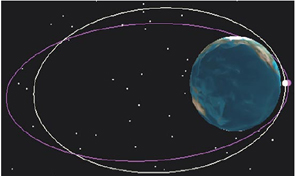
SVLBI (Space Very Long Baseline Interferometry) is an extension of the ground-based VLBI into the space. It has some important potential applications in geodesy and geodynamics, including the definition, practical realization, and the interconnection of different reference frames, determining the geocentric positions of VLBI stations, estimation of the gravity field of the Earth, and satellite orbit determination using the delay and delay rate observables.
It is not simply a project.
It is an ambition.
An assertion of technology.
And taking the technology beyond the realms of monopoly.
There are hurdles. Political and economical.
But stronger is the will to overcome them.
There are confl icts. On approach and interest.
There are frustrations on the delay. And, at stake is the credibility.
Still, there is a resolute to …



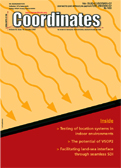
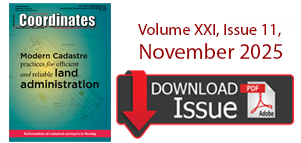

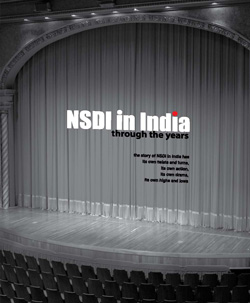
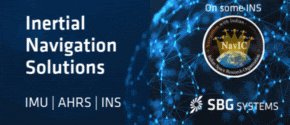



 (5.00 out of 5)
(5.00 out of 5)